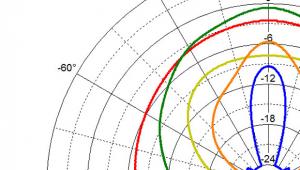For a Song: The $59 Headphone Roundup Page 3
Beyerdynamic DTX 300 p ($59)
"No one's gonna mug you for these," I thought when I unpacked the DTX 300 p. With its thin steel headband and tiny drivers, this ultra-compact on-ear headphone looked, to old-timers Howard and me, disturbingly like the ones the airlines used to rent you for $6 back in the days before headphones became almost as common an accessory as key rings. For Lauren, they brought back memories of the headphones that came with her first Sony cassette Walkman.
But given that the DTX 300 p wears the same brand as one of the clear standouts in our recent audiophile headphone test, you've got to think there's something more going on here. Also, while the DTX 300 is still selling for $52.35 on Amazon (just a little below its original $59.99 list price), we noticed after this review originally posted that it's now available direct from Beyerdynamic's site for just $24.99 - making it a heck of a deal if it performs reasonably well.
When it comes to portability, nothing else in this test compares. The DTX 300 p's earpieces fold to make it even more compact, and it comes with a zippered carrying case. Still, we wonder if the DTX 300 p would survive the rough life of a road warrior. "The plastic pieces holding the earpieces on look like they could snap off in my purse," Lauren commented. Each of the closed-back earpieces contains a 30mm driver in a closed-back enclosure. The DTX 300 p is available in white/gray or black/red color schemes.
The earpieces swivel only side to side, not up and down, so they rely in large part on the limited flexibility of the steel band to adapt to different head and ear shapes. Howard and Joe, despite my directive that they spend extra time playing with the DTX 300 p to assure a good fit, just couldn't get enough of a seal on their ears to get adequate bass. Lauren, with her smaller head and ears, had no problem. I fell somewhere in between.
If it fits you well - and that's a big if - the DTX 300 p can deliver surprisingly good sound for such an ultra-lightweight headphone. "These had the most even response of all the headphones," Lauren commented. "They didn't sound muddy like a lot of them did. The bass isn't amazing, but it's not one-notey as with a lot of these."
I thought the DTX 300 p sounded the best of all the headphones when I played "Sentenza del Cuore - Allegro," from The Coryells, a light, almost bass-less recording of an acoustic guitar trio. It gave The Coryells the best sense of space and the most treble detail I heard in our tests. The DTX 300 p sounded just as gorgeous on "Waltz for Debby," from Cannonball Adderley and Bill Evans' Know What I Mean? But it delivered no sense of groove at all when I played rock tunes.
Howard and Joe, despite repeated attempts to improve the sound by repositioning the earpieces, just couldn't get a natural tonal balance from the DTX 300 p. "It's like strapping a couple of tweeters to your head," Howard cracked. Joe agreed: "Unless I pushed them against my ears, it sounded very harsh, with no lows at all," he said. I could appreciate what they were saying: I sometimes got the same result with the DTX 300 p if I didn't have it perfectly positioned on my ears, something that often took several minutes of experimentation.
During the testing, I discovered what might be the killer app for the DTX 300 p. When I went out on my twice-daily walks with Max, the labradoodle I'm keeping for a friend, the DTX 300 p was always my choice. To me, it's more comfortable than in-ear monitors. It's so lightweight you barely notice you're wearing it, but the clamping force of the band was enough to keep it in place even when I was running around with Max at the off-leash dog park. And for what I listen to while I'm walking the dog - jazz and podcasts - the DTX 300 p's lack of bass isn't a problem.
Measurements: Because of the DTX 300 p's design, which doesn't have a lot of clamping force on your head, I had to use the ear/cheek simulator's clamping mechanism to get the earpieces to mate well with the sim's fake rubber ear. This almost certainly made the measured bass response a few dB stronger than you'd actually experience with the DTX 300 p on your head. Figuring that in, the frequency response measurements look fairly flat, with perhaps a bit of midrange boost and a slightly weak treble. Switching to 75 ohms output impedance for the source had essentially no effect on frequency response; that's a good thing if you want to use the DTX 300 p with a smartphone or a cheap MP3 player. Total harmonic distortion (THD) is moderate for such a small headphone, hitting 4% at 20 Hz at 80 dBA and 6% THD at 100 dBA. Impedance is mostly flat, averaging 34 ohms but bumping up to 44 ohms at 100 Hz. Isolation is below average even with the advantage of the clamping mechanism; while it does dip to -36 dB, it's typically -10 to -15 dB above 1.6 kHz. Average sensitivity from 300 Hz to 10 kHz with a 1 mW signal at the rated 32 ohms impedance is 104.6 dB.
Bottom Line: If you can get it to work with the shape of your head and ears, the DTX 300 p may be the ultimate headphone for light activity like dog walking, strolling the mall, maybe even running on the treadmill.
Don't forget to come back Wednesday for the next installment, in which we'll be looking at the Philips CitiScape Metro and the AudioTechnica ATH-RE70 Retro-Face.





























































